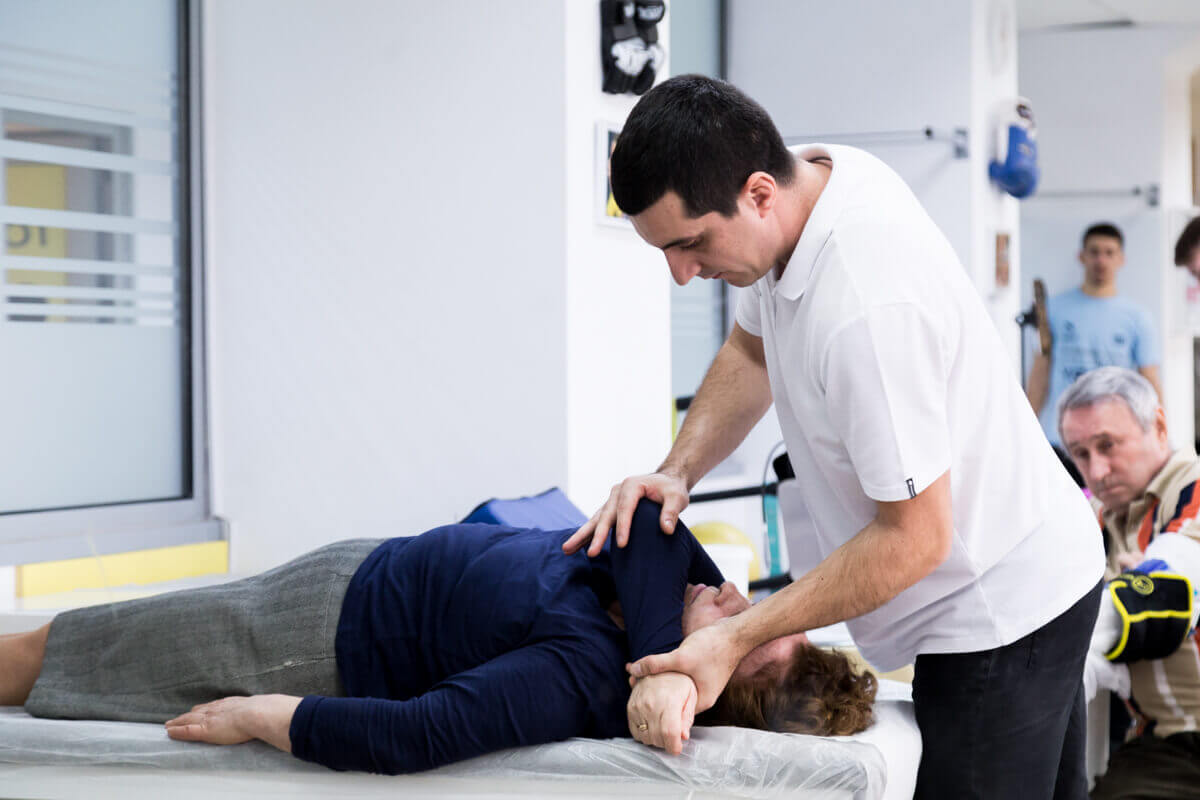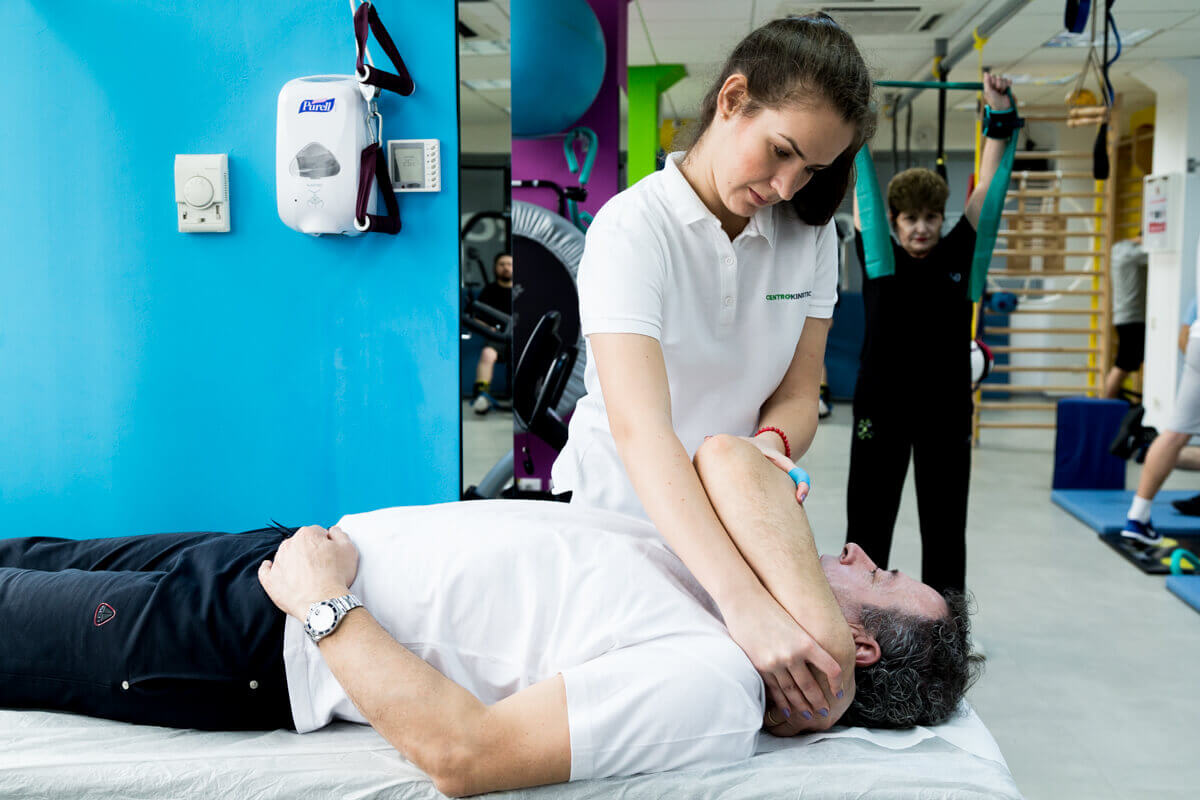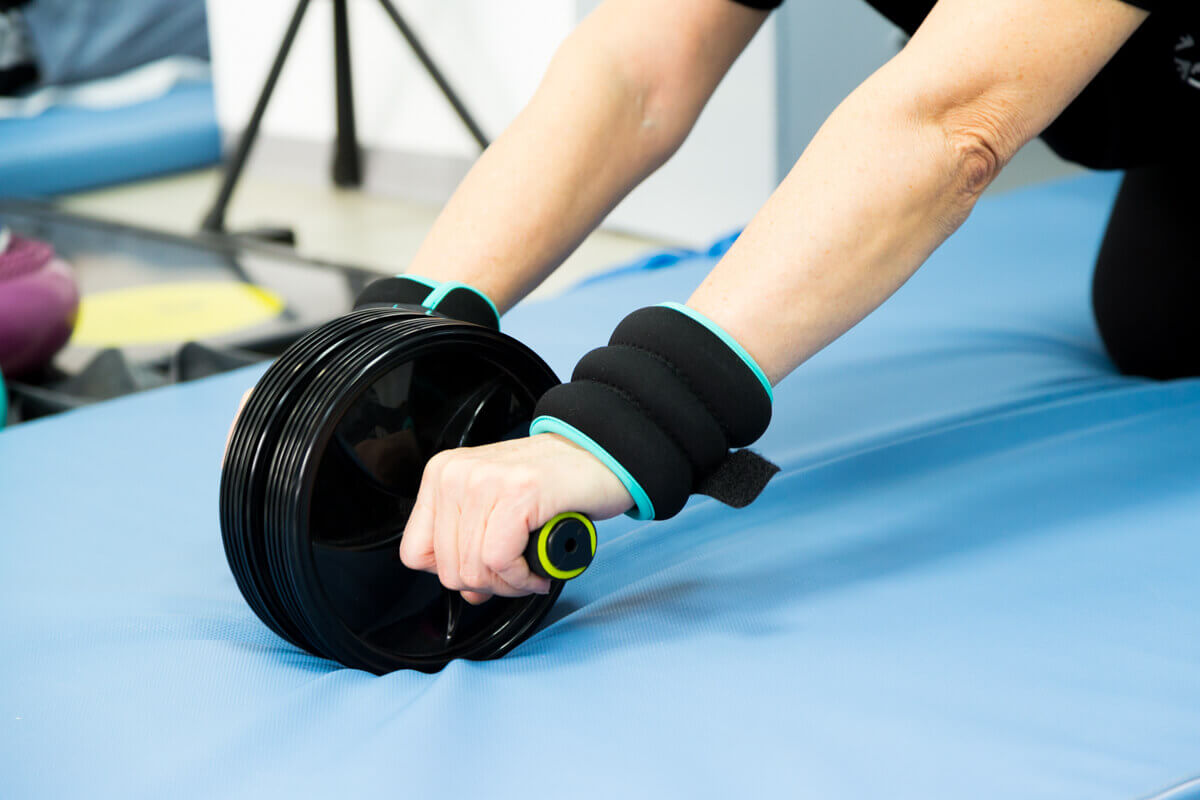See details
READ MORE
Postoperative recovery protocol for acromioclavicular joint injury
The acromioclavicular joint is frequently involved in traumas affecting the shoulder. Most trauma at this level is related to a fall on the shoulder or repetitive action in which the shoulder is involved (for example, in athletes). These conditions are most common after the second decade of life, with a higher incidence in men, especially hockey players and rugby players.The mechanism of production. Falling on the shoulder with the arm in adduction (arm next to the body).
Treatment:
The description of the treatment is made according to the type of acromioclavicular joint injury:Type I
- Orthopedic treatment. Usually, the symptoms disappear after 7-10 days of rest; local ice, in the first 12-24 hours; scarf immobilization. Sports activities and weight lifting are interrupted for a longer period (until the disappearance of symptoms and palpable pain).
- Surgical treatment. It is indicated when symptomatic arthritis develops 6 months after type I acromioclavicular disjunction. The failure of conservative treatment 3-6 months recommends surgery, which consists of resection of the last 5 mm from the distal end of the clavicle.
Type II
- Orthopedic treatment, common with type I disjunction, 14 days of immobilization in a Desault bandage, after 7 days of immobilization, if the symptoms attenuate, light arm movements are indicated, for necessary daily activities. Heavy activities, lifting, contact sports, are not recommended for 6 weeks.
- Surgical treatment, has indications as in the case of type I disjunction.
Type III
- Orthopedic/surgical treatment depending on the patient's level of activity. In the case of orthopedic treatment, the period of immobilization is 14-21 days, resumption of normal activities after 21 days (to alleviate symptoms). At 4 weeks the mobility is 80% compared to the healthy shoulder. Total recovery is obtained in 3 months.
- The surgical treatment consists of fixing the clavicle in a normal position with anchors or by muscle plasty. Recovery after surgery is 1 month, until complete recovery of mobility and 6 months until sports activities.
Types IV, V, and VI always have a surgical indication.

Phase 1: Protection phase (0-6 weeks)
Objectives:
- Ensure the protection of the operation
- Prevent shoulder stiffness
Auxiliary methods
- Use the analgesic medication as needed
- The shoulder orthosis should be worn for 6 weeks
Exercises:
- Elbow, fist, and hand movements: flexion and active extension of the elbow, fist, and fingers is encouraged. Hand prehension exercises are allowed.
- Shoulder mobilization: Start passive shoulder movements, but not higher than 90 degrees. Below the 90 degrees limit, you can also start active shoulder movements.
Caution methods:
- Do not use your operated arm to push or lift objects.
- Do not raise your arm above shoulder level.
- Movements from the table/desk are allowed: writing, dining, using the computer.

Phase 2: Movement phase (7-12 weeks)
Objectives:
- Start active, complete shoulder movements
Auxiliary methods:
- Remove the shoulder orthosis
- You can still use the analgesic medication if needed
Exercises:
- Continue the exercises during the first phase
- Shoulder mobilization: begin passive and active arm lift movements over the shoulder
- Isometric exercises of the shoulder: isometric exercises of flexion, extension, abduction, internal and external rotation of the shoulder can be initiated
- Isotonic strengthening of the shoulder with Theraband: Attach the tape to a handle or hook so that you can stretch the tape until you feel resistance. For starters use low strength tape. Do 5 repetitions 3 times a day. Gradually increase the number until you reach 20 repetitions per day. Once you have reached 20 repetitions, change the band with one with a higher resistance, start with 5 repetitions per day, then increase the number to 20 repetitions. Strengthening exercises should include flexion, extension, abduction, and internal/external shoulder rotation.
Caution methods:
- No sports activities
- No weight lifting
- Avoid local trauma to the shoulder
Phase 3: Strengthening phase (13-18 weeks)
Objectives:
- Shoulder strengthening
- Maintain a full, painless range of shoulder movements
- Strengthen the deltoid, rotator cuff and stabilizing muscles of the scapula
Exercises:
- Continue all the exercises in the first and second phases, described above. Add the following exercises under the direct guidance of a professional physical therapist:
- Isotonic strengthening of the shoulder with weights/dumbbells: Advance the use of light dumbbells (not heavier than 1.5 kg) after finishing the Theraband phase.
- Aggressive stretching: Self-stretching can be helpful before starting strengthening exercises. Do adduction stretching (posterior capsule), external and internal rotation (using a towel or a backstrap) to maximize shoulder mobility.
Caution methods:
- No lifting heavy weights
- No sports activities
- Avoid local trauma to the shoulder

Phase 4: Advanced strenghtening phase (19-26 weeks)
Objectives:
- Functional improvement (if necessary)
- Preparation for sports activities
- Preparing for intense work
Exercises:
- Continue the exercises from phase 3, which you can perform now even without the supervision of a physical therapist
- You can start exercises specific to the sport practiced
Caution methods:
- No weight lifting above the head
- No contact sports
Phase 5: maintenance phase (27+ weeks)
Objectives:
- Return to work without restrictions
- Return to sports activities without restrictions
- Maintaining optimal functionality
Exercises:
- Continue the isotonic strengthening exercises of the shoulder, 3 times a week
- Continue the exercises specific to the sport practiced
SUCCESSFUL RECOVERY STORIES

MAKE AN APPOINTMENT
CONTACT US
MAKE AN APPOINTMENT
FOR AN EXAMINATION
See here how you can make an appointment and the location of our clinics.
MAKE AN APPOINTMENT




































































































































